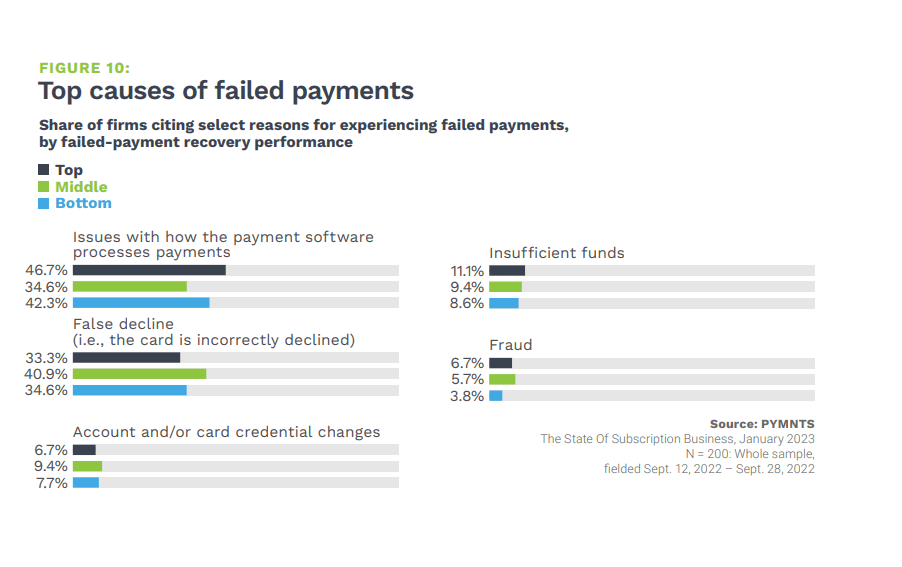Failed Payments Top Pain Point for Subscription Businesses
It’s been a tough time for subscription businesses, especially for direct-to-consumer (D2C) companies focused on retail. PYMNTS’ research noted that the average subscription per retail subscriber dropped in September to 2.9, its lowest level since July 2021. We also measured a 2% dip in the share of consumers overall with retail subscriptions.
Given these economic headwinds, D2C businesses already concerned about surviving may want to reexamine the reliability of their payment processing software.
In the latest PMYNTS/FlexPay collaboration, “The State Of Subscription Business: Best Practices And Business Performance Drivers,” we take a look at an avoidable headache for subscription-based retail companies: issues with payment processing software.

In an interview with PYMNTS, Jesus Luzardo, vice president and head of global partnerships and international sales at subscription management platform Vindicia, underscored the importance for D2C businesses to find a reliable solution. He noted that 8% to 10% of terminally failed payments are due to “issues in the payment infrastructure, from the merchant billing platform to payment processor to card network to issuing bank. All that infrastructure has inefficiency in communication between platforms.”
An 8% to 10% revenue dip can impact any business but could be the tipping point to insolvency for subscription-based retailers already surviving on thin margins. Luckily, this top-cited headache is avoidable, and solutions can be found in the best practices of top-performing competitors.
Top performers in the sector also cite software issues as a main concern, as lower-performing rivals do. Their proactivity in addressing the problem is a key difference. Top performers in the subscription space utilize 3.1 payment recovery methods on average, while bottom performers employ only an average of 1.8. Some of the tools top performers apply to minimize failed payment revenue loss include tracking multiple metrics, such as involuntary churn and implementing specialized payment recovery solutions.
In an interview with PYMNTS’ Karen Webster, sticky.io CEO Brian Bogosian detailed why failed payments can affect more than subscription businesses’ short-term bottom line.
“Failed payments are not only a revenue problem but also a branding problem,” he said. “Customer experience is at the core of brand loyalty. Imagine suddenly getting disconnected from YouTube Live because of a single, accidental failed payment and being unable to watch NBA star Stephen Curry make his famous three-pointer in real time. Customers who want hassle-free subscriptions don’t want to think about payments, especially failed ones that cause disconnection and headaches.”
Also notable when considering revenue loss is the type of solution that is most effective in the industry. Top-performing subscription companies are 12 times more likely to use third-party payment recovery software solutions than bottom performers, at 47% versus 3.8%. This translates to top performers recovering 13% more failed payments than their lowest-performing competitors. Recommended strategies these third-party solutions may enable include account updater services and dunning (retrying a failed payment at a later time.)
If they follow the lead of the sector’s top performers, lower-performing subscription companies may find relief from the payment process software issues that lead to involuntary churn. By partnering with a reliable third-party provider, struggling subscription companies may discover they now have the space to address more complex revenue loss conundrums.